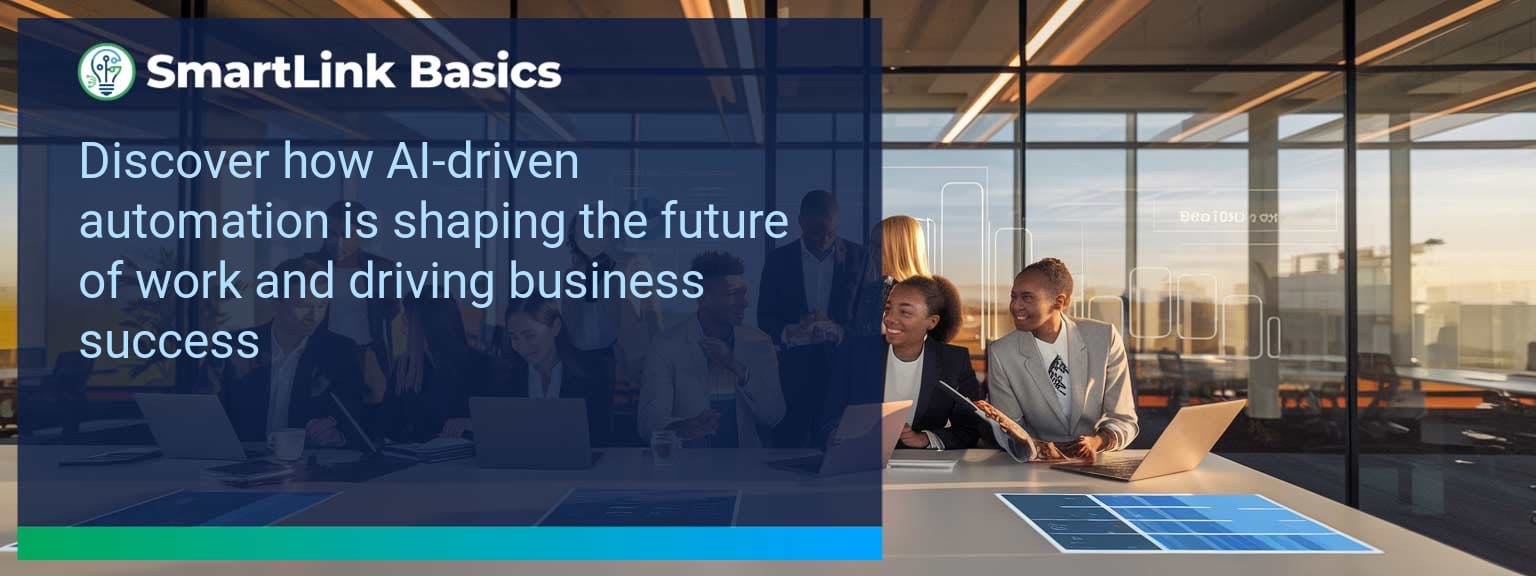Across industries, competitive advantage now depends on the ability to integrate artificial intelligence into everyday operations. AI-driven automation is no longer a theoretical upgrade—it is a core capability, reshaping the future of work and revenue performance. At SmartLink Basics, we see sales leaders leveraging this shift to redesign processes, boost productivity, and enable faster, data-backed decision-making. This article outlines the barriers, solutions, and measurable impact of AI-driven automation, giving you a playbook for sustainable growth. You’ll gain practical strategies, examples, and a framework for preparing your business to thrive in a technology-first economy.
- Integrate AI-driven automation to streamline workflows and reduce manual effort
- Address internal adoption barriers with targeted enablement strategies
- Design operating systems around automated, data-informed decision-making
- Track performance through leading, lagging, and quality metrics
- Prepare teams for continuous adaptation as AI capabilities evolve
What Changed and Why AI-Driven Automation Matters Now
The convergence of machine learning tools, process automation, and digital transformation has redefined operational speed and accuracy. Sales teams can now automate lead scoring, personalize outreach at scale, and forecast with unprecedented precision. This acceleration creates both opportunity and pressure for leaders to upgrade systems. For example, organizations using AI-enabled pipeline management report win-rate improvements of up to 20% in one year. The advantage compounds over time as automation continuously optimizes execution. Focus now on aligning AI capability with your strategic objectives, rather than simply deploying tools.Redesign the Revenue Operating System with AI-Driven Automation
ICP, Segmentation, and Targeting Automation sharpens your Ideal Customer Profile by analyzing large datasets for buying patterns and engagement triggers. This allows micro-segmentation and precise targeting without slowing outbound velocity. Pipeline Architecture AI forecasting tools dynamically adjust probabilities based on behavior signals, enhancing resource allocation and deal prioritization. Plays and Messaging Automated content engines adapt scripts and messaging to buyer stage and persona, increasing relevance at scale. Operating Cadence Automation reinforces discipline in meeting schedules, updates, and handoffs, creating consistent execution habits. Prioritize integration points where automation reduces friction and increases decision speed.Identifying Barriers to Adoption
Even high-performing organizations face cultural, structural, and technical friction when introducing AI-driven automation. Common challenges include unclear ROI models, skill gaps in AI literacy, and entrenched manual processes. For instance, teams relying on static reporting often resist automated dashboards, perceiving them as complex. Address adoption risk early with clear communication, targeted training, and visible executive sponsorship. Build an implementation roadmap that pairs technical deployment with change management activities.How AI-Driven Automation Solves Key Problems
When integrated correctly, automation eliminates redundant administrative work, enhances decision quality, and increases customer responsiveness. AI can auto-prioritize leads, flag at-risk accounts, and prompt timely follow-ups—activities that previously consumed significant human time. One enterprise SaaS firm reduced deal cycle time by 18% after automating contract review and approval workflows. Map automation directly to business pain points for faster wins and stronger executive buy-in.Measuring the Impact on Efficiency and Growth
Selecting the right metrics ensures automation initiatives stay connected to business outcomes. Balance leading indicators, such as process compliance, with lagging results like revenue growth. Below is a recommended measurement framework.| Category | Metric | Definition | Target |
|---|---|---|---|
| Leading | Automation Utilization Rate | % of eligible process steps completed automatically | 85%+ |
| Leading | Data Refresh Frequency | Average interval between CRM data syncs | < 24 hours |
| Lagging | Revenue per Rep | Total team revenue ÷ number of reps | $1.2M+ |
| Lagging | Customer Retention Rate | % of accounts retained over 12 months | 92%+ |
| Quality | Automation Accuracy | % of AI-processed tasks requiring no manual correction | 97%+ |
| Quality | User Adoption Score | Composite score from team usage frequency and satisfaction surveys | ≥ 4.2/5 |
Preparing for Tomorrow’s Opportunities
Future competitiveness will hinge less on whether you use AI and more on how fluidly you adapt as its capabilities expand. Establish continuous learning loops, encourage experimentation, and integrate AI-readiness into hiring profiles. A regional B2B distributor gained a 12-month edge over competitors by piloting AI in demand forecasting before market adoption accelerated. Position your teams to pivot quickly by investing in both systems and skills. <Get the 90-day plan, coaching rubric, and dashboard template to operationalize AI in your enablement program.









